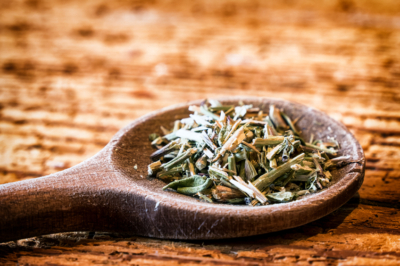Hyssop tastes strong and spicy with a slightly bitter note. The aromatic herb comes from the south and is suitable for preparing most Mediterranean dishes. Hyssop is also unbeatable as an ingredient in herbal tea, oil or in fragrance blends.

In southern Europe hyssop grows as a wild herb in the rocky, dry areas. Since the Middle Ages, it has also been cultivated in more northern regions. At that time hyssop was used against lung diseases, dropsy, epilepsy, plague and for poultices in the treatment of wounds. Even today, hyssop is used medicinally in naturopathy and homeopathy, as well as in cosmetics and perfume production.
Use in the kitchen
Young leaves and shoots, but also the flowers are preferably used fresh, alternatively dried, for seasoning. The aromatic herb should not be cooked, as it loses its aroma. Harvesting starts around June. There are the following uses for fresh herb:
- for potato or tomato salad,
- in soups and with roasts,
- for pickling grilled food,
- as a mixture for herb butter,
- for the production of herb liqueur.
Other uses
Hyssop contains a variety of essential oils, bitter and tannins. These substances have helped hyssop gain its reputation as a medicinal herb. In the past, hyssop was used to treat lung diseases, digestive problems, and also for ablutions. In naturopathy, it is still considered to have anti-inflammatory, antispasmodic and tonic effects.
As an ingredient in herbal tea or fragrance blends, hyssop is said to help with cold symptoms. However, the proportion of hyssop in a tea mixture should not exceed 5%. In general, due to symptoms of poisoning that have already occurred, it is warned against use, especially in higher doses over a longer period of time, in the following cases:
- in pregnant women,
- in infants,
- people suffering from epilepsy.
Tips
Hyssop is also well suited as an ornamental shrub, especially for edging rose beds. It is easy to care for, hardy and remains evergreen in mild winters.

